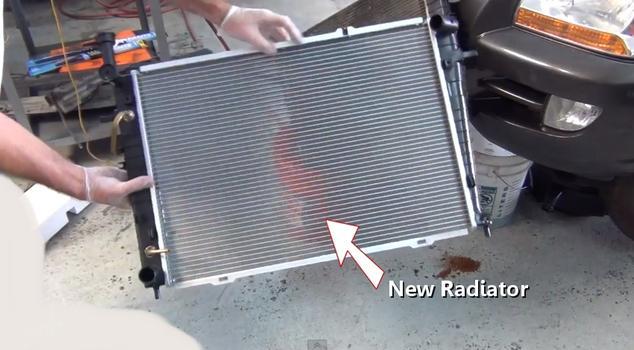The heat is produced in the engine in an area away from the temperature sensor. When you turn the engine off, that heat migrates around and there is no cool coolant coming in from the radiator until the engine is restarted. That higher temperature shows up on the gauge when you restart the hot engine, then it goes down quickly when the cool coolant comes in from the radiator. You can prove that to yourself by turning the ignition switch back on right after stopping the engine. The temperature gauge will go up over a period of about five minutes. You know the engine temperature isn't really going up because it isn't running. The heat from deep inside the engine is finding its way to the temperature sensor.
You're more observant than most drivers, but I think you don't actually have a problem that is of concern. Five years after replacing the thermostat on my '88 Grand Caravan, the temperature gauge started going into the "red" zone after driving five miles, then it would suddenly drop to cold, go back up, then down a few times until it settled out. All it needed was to have a tiny bypass hole drilled into into it like the original one had. The real question was, why didn't it act up for the first five years? Something changed in the system. That's not to say something was defective. It just means something was different.
All summer long my temperature gauge has been hanging around half scale. Today it's down to the low 50s outside and my gauge is suddenly staying below 1/4 scale. The heater will still burn me out but the cooling system is fine. The best I can suggest is it's common for temperature gauges to read slightly differently under different conditions, (outside temperature, road speed, AC on or off, pulling a trailer, etc.), But from what you've observed, I don't think you have a problem.
One other thing you might consider is you mentioned adding some coolant. If you did not add 50 percent water with it, the ratio of antifreeze to water changed. Antifreeze does not hold as many BTUs as water. That means your coolant mixture now will rise in temperature faster as the engine warms up and it will transfer that heat to the radiator at a slower rate. In response, the thermostat will just open up sooner and stay open further, longer, so the temperature remains correct. That can easily explain the change you're seeing in the temperature gauge. Again, nothing to worry about, but keep watching it.
Thursday, October 13th, 2011 AT 8:24 PM


